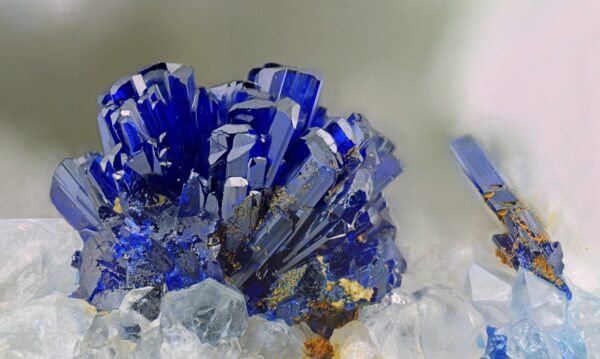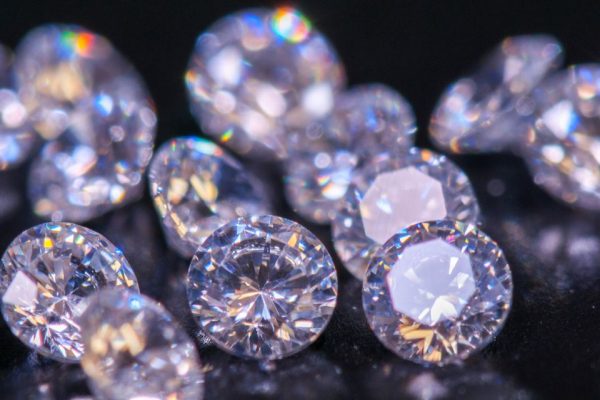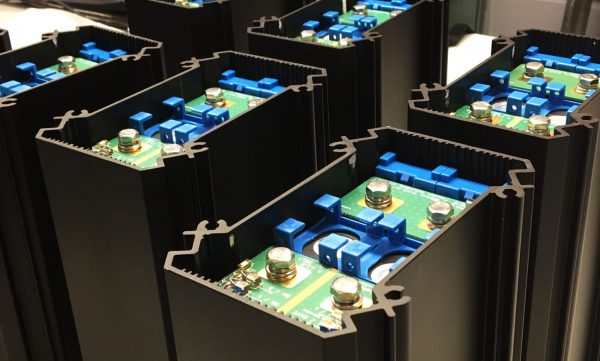Zimbabwe Mining Sector: Opportunities Galore

Zimbabwe’s hopes for a quick economic recovery and sustainable foreign exchange stability rest on the shoulders of its multibillion-dollar mining industry.
By Francis Shingi Nhunzvi and Victor Bhoroma
Beyond the productivity bottlenecks of the past 2 years, mining commodities earned the country US$2.91 billion in 2019 (9% down from the 2018 haul). The earnings represent 68% of the total export value from Harare. So huge is the potential in the industry that the government set an export target of US$12 billion for 2023. Zimbabwe has over 800 operating mines across the country and these range from international mining houses to small scale mines. In terms of employment, the sector currently employs over 80 000 workers directly and thousands more indirectly in downstream businesses. The country has a massive competitive advantage in the mining sector because of its a huge and highly diversified mineral resource base dominated by two prominent geological features namely the famous Great Dyke and the ancient Greenstone Belts (also known as Gold Belts) which are home to billions worth of Chrome, Gold, Nickel, Iron Ore and Platinum Group of Metals (PGM).
Currently, several large projects are being undertaken in mining. Prospect Resources (Australia and Frankfurt Stock Exchange Listed) is well on course to complete its Arcadia Lithium Mine in Goromonzi, near the capital Harare. The miner has been very proactive in securing markets and tie synergies that will give it an edge in exporting Lithium to the world market. Karo Resources which settled on the rich Great Dyke in the last 2 years, is developing its Ngezi Platinum Mine with a target to start mining in the last quarter of 2020. Great Dyke Investments (A joint venture between Afromet JSC and Landela Mining), is currently developing its billion-dollar Darwendale platinum project with a target to complete mine construction in 2020. The completion of these two platinum projects will add onto the beneficiated output from Unki, Zimplats and Mimosa Mines which have catapulted Zimbabwe into one of the best producers of Platinum in the world.
Despite the current economic headwinds and COVID-19 induced business downturn, Zimbabwe has one of the best-untapped investment opportunities in the world when it comes to mining.
Large Reserves of precious minerals
Generally, Zimbabwe remains under-explored when it comes to mining. Investment and tax incentives to boost exploration capacity will play a crucial role in quantifying the amount of mineral reserves. The country has over 4 000 recorded Gold deposits in the Greenstone Belts, an estimated reserve of 2.8 billion tonnes PGMs ore and over 30 deposits of Nickel in the Great Dyke, over 12 billion tonnes of coal in the mid-Zambezi Basin and the Save-Limpopo basin and several kimberlites of Diamonds in Manicaland and Masvingo.
Diamond Sector Overview
Zimbabwe’s diamond industry dates back to 1975 when the first Kimberlite deposit was discovered. The River Ranch kimberlite was discovered in 1975 whilst following up on an alluvial diamond discovered in a stream draining the kimberlite. The pipe is situated in the Central Zone of the Limpopo Belt, a zone of high-grade metamorphism between the Zimbabwean and the Kaapvaal cratons and intrudes Archean metasediments of the Beitbridge Group. The mine was placed under liquidation by the High Court in 2012 after failing to attract investors almost five years after its operations ceased.
The other player which has been a consistent face of diamond mining in Zimbabwe is Murowa Diamonds. The Murowa Diamond Mine is an open-pit mining operation located near Zvishavane in south-central Zimbabwe. Production from Murowa began in 2004 with a current capability of around 400,000 carats per annum of large, predominantly white, gem-quality diamonds.
Another player in the diamond industry in Zimbabwe is the State miner, Zimbabwe Consolidated Diamond Company (Pvt) Ltd (ZCDC) which is a diamond mining company wholly owned by the Government of Zimbabwe. The Company has mining operations in Manicaland in Mutare’s Chiadzwa area and Chimanimani.
Apart from the operations highlighted above, Zimbabwe is believed to be home to over 120 Kimberlite deposits whose economic viability is yet to be established through enhanced exploration and evaluation
In 2019, a Russian mining company Alrosa signed a joint venture (JV) agreement with Zimbabwe Consolidated Diamond Company (ZCDC) to develop kimberlite diamond deposits in Zimbabwe. The company is undertaking exploration activities in hope of discovering viable kimberlite deposits across the country.
The sector is expected to contribute USD1 billion by 2023 under the Ministry of Mine’s 2023 mining industry USD12 billion milestone. In 2020, the government increased the sector’s foreign currency retention threshold to 75% from 50% in a bid to enhance competitiveness.
Enter Lithium & Rare Earth Elements (REE)
The country recently discovered that it has a sizeable base of Rare Earth Elements (REE) metals which are used in the manufacture of electronics. The findings add to the huge deposits of Lithium found in Bikita, Goromonzi, and Kamativi. The global push for lithium battery-powered electric cars, consumer electronics and renewable energy in high-income markets will create a lucrative market for Lithium and REE metals produced in Zimbabwe.
Low hanging fruits in beneficiation
Most of the mining commodities exported from Zimbabwe are shipped in their unprocessed form and beneficiated further in other countries. This presents massive investment opportunities for processing and beneficiation close to the source for the already developed export markets. The Government of Zimbabwe is desperate to see value addition of minerals before exporting and would welcome such investment with both arms and feet.
Recently, Mutare City Council donated 72 hectares of land in Fern Valley for the construction of the Gemology Hub. The designated area was granted Special Economic Zone status to attract investors. Within these 72 hectares, 12 hectares was allocated for the construction of the first phase which is the Gemology school. The second, third and fourth phases will comprise of diamond cutting and polishing, jewellery manufacturing and lapidary and ancillary services respectively.
Such investment would get automatic considerations for national project status which offers several commercial benefits to the investors. There are vast investment opportunities in refining Platinum and Lithium locally. Similarly, Gold jewellery making, chrome smelting, diamond cutting and polishing can provide rich pickings for investors with a long term eye for backward integration.
Foreign earnings retention scheme
Zimbabwe is refining its foreign exchange retention scheme with local exporters currently pocketing 70% of their export earnings and selling 30% locally via the recently launched Foreign Currency Auction System. There has been stability on the foreign exchange market and any sustenance to the prevailing foreign exchange policy will help eliminate investor concerns on the retention scheme. Going forward, it is envisaged that miners will retain 100% of their export earnings while repatriating such proceeds back to Zimbabwe.
Favourable Mining Trends
The recent change in the Indigenization and Empowerment Policy to allow for any percentage of foreign ownership in mining assets has also improved appetite for investment into the country. Further, Zimbabwe is streamlining its ease of doing business policies and procedures to create a welcoming investment climate. The ease of doing business reforms are slowly bearing fruit with Zimbabwe climbing 15 places on the ease of doing business rankings to 140 out of 190 ranked countries in 2018. The rally in Gold price to about US,000 per ounce on the world market also makes the country’s redundant gold mines very appealing. With the small scale and artisanal miners now contributing 60% of the produced Gold in the country, demand for small mining equipment is projected to grow. These small scales and artisanal miners urgently need movable mining machinery and equipment such as excavators, compressors, dewatering and slurry pumps, generators, jackhammers and jaw crashers to ramp up production. Therefore lease financing, contract mining and exploration services are vital to these small-scale miners.
Investing in Zimbabwe’s mining sector needs a long term approach. Evergreen minerals such as Gold, Nickel, Diamond and Platinum will continue to play a crucial role in export earnings. A surge in demand for Lithium and REE metals will provide an anchor to the base for mining sector dominance in the economy in terms of employment creation, tax payments, export earnings, value chain development, agglomeration and infrastructure development. Most of the country’s 50 commercially exploitable minerals are largely untapped and therefore its opportunities galore in Zimbabwe’s mining industry.
This article was co-authored by Francis Shingi Nhunzvi (CMILT) and Victor Bhoroma The authors possess considerable experience in economic and investment analysis in the mining sector in Zimbabwe. They are both holders of MBA degrees from the University of Zimbabwe (UZ). For feedback: Email them on [email protected] and [email protected]





